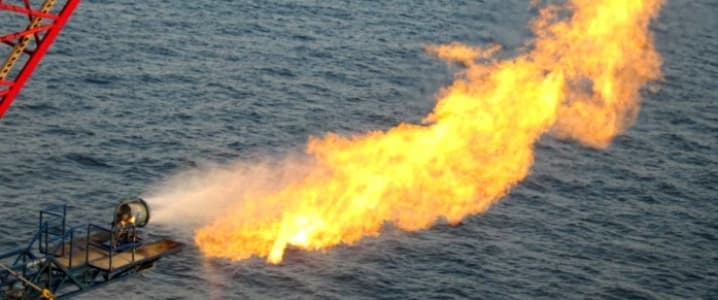The first flow of gas from the offshore Zohr gas field, located 200 km north of Port Said, is expected in December, according to government officials.
Speaking in October, Tarek El Molla, minister of petroleum and mineral resources, said development of the field was 91 percent complete. Initial production is forecast at around 500m-1bn cu feet per day (cfpd), with output projected to rise to 2.7bn in 2019 once all seven fields are operational.
International majors take stakes in Zohr development
Discovered by Italian energy company Eni in 2015, the Zohr field has 30trn cu feet of estimated reserves, making it one of the largest finds to be developed in recent years.
The project has generated significant investment interest, with Russian energy giant Rosneft buying a $1.1bn stake in the field from Eni in October. The Italian firm will hold 60 percent of the development, with Rosneft taking 30 percent and BP 10 percent.
Less than a month after this announcement came the news that a second large-scale gas development is scheduled to come on-line before the end of the year.
The Atoll Phase One project, an offshore joint venture between the Egyptian Natural Gas Holding Company and BP, contains estimated reserves of 1.5trn cu feet of gas and 31m barrels of condensates. Initial production is expected to deliver 300m cfpd to the domestic market in the first quarter of 2018.
Increased production at existing fields boosts gas output
The new flows come on the back of heightened activity in 2017, as gas output rose steadily at existing fields.
In May BP began production at two of the five fields that make up the North Alexandria and West Mediterranean deepwater offshore concession blocks, with the initial take pumped directly into the national grid. The 700m cfpd from the Libra and Taurus fields has helped raise Egypt’s daily gas production to an average of 5.1bn cu feet, up from 4.4bn in 2016.
Once the five fields are fully operational in 2019, BP expects output will reach 1.5bn cfpd, further increasing the country’s production capacity.
Gas surplus could see Egypt resume export role
The increase in domestic gas production is already helping to curb Egypt’s energy imports, alleviating pressure on foreign currency reserves, reducing government expenditures and supporting broader economic growth. Related: Who Will Win The Self-Driving Taxi Race?
In September government officials said liquefied natural gas imports – which cost roughly $1.8bn per year – would be reduced by 32.2 percent to 80 cargoes in FY 2017/18.
Egypt hopes to achieve natural gas self-sufficiency by the end of 2018, according to El Molla. He told local media the country was eyeing a gas surplus by 2020, raising the possibility that it could begin exporting again.
Egypt was a net energy exporter for many decades; however, a drop in production and increased domestic demand in the late 2000s saw the 95m-person country become increasingly reliant on imports.
Energy consumption drivers
This transition came about as a result of growing natural gas consumption, driven primarily by rising demand in the power and industrial sectors.
Domestic electricity generation already consumes between half and two-thirds of gas output, and has been under upward pressure as a result of high population growth; the country is expanding by around 1.5m-2m people per year.
According to the 2017 BP Statistical Review of World Energy, Egypt’s natural gas consumption increased by 7 percent in 2016 to reach 51.3bn cu metres – almost double the average annual growth rate of 4.2 percent in 2005-15.
Consumption levels are particularly high in the hot summer months; in August of this year, for example, gas usage at the country’s power plants rose from 99m cu metres per day to around 110m when temperatures spiked, according to the Ministry of Petroleum.
By Oxford Business Group
More Top Reads From Oilprice.com:
- The UAE Plans The Last Few Decades Of Its Oil Game
- Maduro: Venezuela Could Stop Crude Oil Sales To U.S.
- Vienna Is The Ultimate OPEC Smokescreen



















So my only question is why is oil selling above the $30 to $40 dollar range, and why would it go up rather than down with all the current trends in favor of more and more supply of oil and gas being available, and more and more capacity idled just sitting there in a desperate attempt to lift prices?